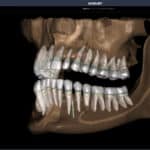With orthodontic case fees under pressure from discount providers and DSOs, private practices must prepare now for intensifying fee-based competition.
By Roger P. Levin, DDS
One of my favorite business publications is the Harvard Business Review. I’ve been reading it for over 30 years and find many of the articles to be very relevant. Occasionally, I read an article that does not seem to have any direct relevance to me. However, I have learned to pay attention to these types of articles because they reflect what is happening somewhere and that situation could eventually apply to me, my company, or the dental industry.
I raise this point because this article may not be immediately relevant to every orthodontist reading it. In fact, I would assume it’s not directly relevant yet to most readers. But I’m going to make a recommendation. You should be prepared to face this issue because I predict it will apply to most orthodontists in the near future.
The fee wars in orthodontics
I was recently lecturing at the national user group meeting of an orthodontic software when I was approached by a young orthodontist during the break. Her question was simple and direct. Her orthodontic case fees were between $6,000 and $7,000. Not unusual, not over the top, not notable, except for one new development: a new orthodontist in town was offering orthodontic case fees of $3,700. She wanted to know how to compete as this was a very challenging situation. The age-old standard answer to overcoming competition is to create enough value to overcome the lower fees. If only it were that simple today.
This is not the first time I have had this conversation. Levin Group receives emails, texts, and phone calls almost weekly from orthodontists looking for advice and we are getting the fee war question more often than in the past. In fact, we recently received a call from an orthodontist who thought that consulting may solve the problems presented by a new orthodontist in their area who was giving out $500 discount certificates to general dentists for them to hand out to referred patients to his fairly new practice. In other states, such as Florida, you will find billboards advertising orthodontics at up to half of the average national fee. Unfortunately, I predict that the fee wars are going to steadily increase.
If in any way you are doubting this prediction, consider that one of the largest dental service organizations (DSOs) in the country now offers aligners at $1,999. This DSO was not only profitable last year but grew by 13% overall. This was not simply due to orthodontics, but clearly the orthodontic case fee/price of $1,999 was strategically selected to be considerably less than most orthodontic practices.
How do you compete with higher fees?
Hopefully, you are not currently experiencing a fee war, but you should still be aware, prepared, and have at least a semblance of a plan for how you would compete if things change. Let me offer three scenarios that you can consider to help prepare:
Question #1: Is your brand value proposition, overall patient satisfaction score, and skillset of your team at a high enough level to compete?
Most orthodontic practices work very hard to create great experiences for patients, and orthodontic team members are probably some of the most highly trained staff members in dentistry. I make this claim about orthodontic teams being highly trained because orthodontic practices have the highest delegation levels for servicing patients in dentistry by far. But is it good enough during a fee war to justify higher fees from your orthodontic practice?
Don’t be fooled into thinking that people will pay more for a specialist. Generally speaking, they will, but a fee war could occur between two specialists. At that point, the argument that one orthodontic practice is better than another from a purely clinical standpoint becomes moot. And over time it may not even hold when competing against general dentists if the fees are low enough as in the DSO example above.
We recommend that orthodontic practices should take time to do a brand scan. A brand scan is a deep dive into analyzing your current brand, how the practice is viewed, what the practice has done to communicate the brand and drive it into the community.
Here is the good news. Most practices have done nothing to create their own brand. They are seen solely as “orthodontic practices” and have developed a referral pattern that has worked so far. This doesn’t sound like good news, but it is because most practices are more than “just ortho practices” and this offers lots of opportunity. Take the time to identify your brand by understanding how and why patients come to your practice. Are they coming in because you are a young orthodontist with children that spends a lot of time in the community interacting with other families? Are you a 40-year-old practice with a great reputation? Are you the dominant practice in the area? Is your location better than others? Are you more expensive or less expensive and is there a reason you can use to justify it to patients?
Identifying a brand is the first step. Then you have to “drive“ the brand. You need to put it everywhere and ensure that every parent and patient knows about it. Ensure that every communication and referral marketing strategy includes the brand in some way, shape, or form. Having a great brand is useless if no one knows it.
Question #2: Should all orthodontic cases have the same fee even in the same office?
I know this is a controversial proposal but consider it for the sake of discussion. I do believe we are going to see orthodontic practices that have different fees for different levels of service. There could be a comprehensive fee that includes everything. Or a lower fee that only includes the basic treatment without retainers, emergencies, or other services. There could even be a fee for different case complexity. And soon, because it appears that remote monitoring will become a powerful part of many orthodontic practices, even a separate fee, depending on how often the orthodontist thinks the patient will need to be seen in person.
If you want to be well prepared to compete on price, this is the type of question you should consider. Even if you choose never to have multiple fee levels, the exercise of considering it will provide insights into how you will respond to the challenge, should it happen.
Question #3: Is your office operating at maximum efficiency, which is key to competing in a fee war?
Most orthodontic practices are reasonably well run. But is that good enough during a fee war? Make sure every aspect of your practice, such as the new patient experience system, the treatment coordinator consult system, your referral marketing program, and all patient communication and customer service, is operating at the highest possible level. All of these factors are critical to achieving the ultimate level of production, profit, and income. Invest in team training for both clinical and practice management, implement new technology that will improve workflow, and allow your practice to see the maximum number of patients you can accommodate.
You must also remember that systems are paramount to practice success. To operate at maximum efficiency, practices need step-by-step delineated systems that can act as a training guide for the team. The best practices simply have the best systems and those systems are upgraded every 3 to 4 years due to the rate of change taking place in orthodontics.
Lastly, having a team that functions supportively of each other and engages in teamwork is a significant positive for a practice. Teams that understand their positions will take responsibility and be accountable for achieving goals. That team will take a practice further than a team that is fragmented, less invested, or less trained. Maximum efficiency should be the goal of every orthodontic practice—especially as chair time can be expanded with advanced technologies like remote monitoring and digitization. Running at maximum efficiency, a practice can fully benefit from an effective referral marketing program that brings in more patients and reach their production goals.
READ MORE: How Orthodontic Practices Leak Revenue and Miss Growth Targets
Are fee wars coming tomorrow? Not everywhere, but they will occur more frequently and in more locations. The important point is that if it happens in your area as in the examples above, then it really does not matter what is happening in the rest of the country because you will be impacted. You want to be prepared for what is almost an inevitable next step in orthodontics as more and more service delivery models exist. Practices that prepare today will remain strong tomorrow and be more successful than ever before. OP
Photo: ID 7899846 © Gunnar3000 | Dreamstime.com

Roger P. Levin, DDS, is the CEO and founder of Levin Group, a leading practice management consulting firm that has worked with over 30,000 practices to increase production. A recognized expert on orthodontic practice management and marketing, he has written 67 books and over 4,000 articles and regularly presents seminars in the U.S. and around the world. To contact Levin or to join the 40,000 dental professionals who receive his Practice Production Tip of the Day, visit levingroup.com or email [email protected].










